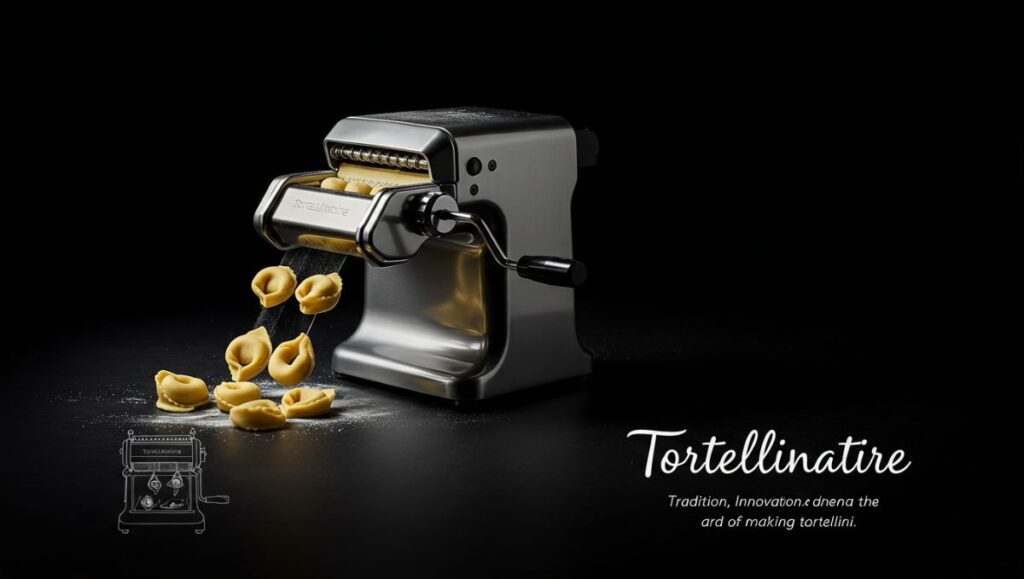The word tortellinatrice carries a special charm in Italian culture. It refers both to the skilled person who makes tortellini by hand and to the modern machine designed to produce these small, filled pasta shapes. In either sense, the tortellinatrice symbolizes the blending of tradition and innovation in Italian cuisine.
The Origins of Tortellinatrice
The term tortellinatrice is derived from tortellini, one of Italy’s most iconic pasta varieties. Traditionally, tortellini were prepared by expert cooks, often women in family kitchens, who carefully shaped the pasta by hand. Over time, as demand grew, machines were developed to replicate this artisanal process on a larger scale, giving birth to the mechanical tortellinatrice.
Cultural Significance of Tortellini
To understand the importance of the tortellinatrice, one must first appreciate tortellini itself. Originating in Emilia-Romagna, tortellini are more than just food—they are a symbol of Italian identity, passed down through generations. Whether served in broth (tortellini in brodo) or with cream, these pasta parcels embody tradition, family, and regional pride.
The Tortellinatrice as a Skilled Person
In the traditional sense, a tortellinatrice is a craftsperson, usually a woman, who spends years perfecting the art of folding tortellini. This role requires patience, dexterity, and knowledge of local recipes. For many families, the tortellinatrice is not only a cook but also a guardian of cultural heritage, ensuring that traditional pasta-making techniques live on.
The Tortellinatrice as a Machine
In modern culinary production, the word tortellinatrice also refers to a specialized pasta machine designed to create tortellini efficiently. These machines can fold thousands of pieces per hour, replicating the shape and consistency of handmade pasta. While not a replacement for artisanal skill, the mechanical tortellinatrice has made tortellini accessible on a global scale.
How a Tortellinatrice Machine Works
The tortelli-natrice machine functions by automating three key steps: rolling the pasta sheet, filling it with the chosen stuffing, and folding it into the classic ring shape. Advanced models can adjust thickness, filling quantity, and folding technique, making them essential tools for restaurants and factories producing tortellini for wider markets.
Tradition vs. Innovation
The debate between handmade tortellini and those produced by a tortelli-natrice machine is ongoing. Purists argue that only hand-folded tortellini carry the authentic texture and flavor of tradition. However, machines allow larger quantities to be made while preserving much of the artistry. In reality, both versions coexist—handmade for special occasions and industrial for everyday consumption.
The Role of Tortellinatrice in Culinary Heritage
The tortelli-natrice highlights an important theme in gastronomy: preserving tradition while embracing modern needs. Handmade tortellini maintain authenticity, while machines ensure efficiency and accessibility. This balance allows Italian cuisine to remain globally relevant without losing its cultural roots.
Tortellinatrice and Global Cuisine
Thanks to the tortelli-natrice, tortellini have spread far beyond Italy. Restaurants worldwide now serve them, and supermarkets sell packaged versions made by machine. This global reach has elevated tortellini from a regional specialty to an international favorite, proving the importance of both traditional artisans and modern machinery.
Becoming a Skilled Tortellinatrice
For those inspired to master the craft, becoming a tortellinatrice by hand is both challenging and rewarding. Training often begins in family kitchens, with recipes passed down through generations. Culinary schools in Italy also offer courses dedicated to pasta-making, where students learn the precise folds and techniques required for perfect tortellini.
The Future of Tortellinatrice Technology
The evolution of the tortelli-natrice machine continues. Modern innovations include digital controls, customizable pasta shapes, and even AI-assisted folding techniques. These advancements ensure that production remains efficient while striving to mimic the handmade quality that defines authentic tortellini.
Tortellinatrice in Popular Culture
The figure of the tortelli-natrice—whether a grandmother folding pasta by hand or a gleaming machine in a modern factory—has entered popular culture. Documentaries, cooking shows, and social media highlight both interpretations, celebrating the artistry and technology that keep tortellini alive.
Challenges in Preserving Authenticity
One challenge faced by the tortelli-natrice machine is maintaining the authentic taste and texture of handmade tortellini. While efficiency is an advantage, some argue that cultural heritage risks dilution if machines completely replace hand-folding traditions. Balancing authenticity with modern convenience remains central to the story of the tortellinatrice.
Conclusion
The word tortellinatrice carries dual meanings that perfectly capture the balance between tradition and modernity. As a skilled artisan, it honors the dedication of those who fold tortellini by hand. As a machine, it represents technological progress, ensuring the world has access to this beloved dish. Together, both versions of the tortellinatrice ensure that the legacy of tortellini continues to thrive across generations and continents.







